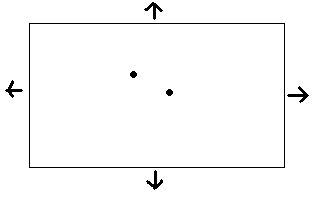This thought has completely changed my perspective towards matter. If the matter in a star can collapse to a point to form a Black hole, surely the true nature of matter should be able explain this behavior. I find this collapse easy to imagine if I visualize Matter as something which lies in space, but which itself is not space, or space-like... It does not occupies space... What I mean is this... Why should matter occupy space? Space-fulness is the nature of space, why associate it with matter?
I use this modified picture of matter to explain the collapse of a star to a point. Suppose matter in a star has 0 volume, and it is the space in between matter that does the job of occupying the volume, then we can easily eliminate this space to explain a point sized infinitely dense black hole...!
A particle of matter with no volume is hardly like a particle I had imagined earlier. It is more surprising...
I think that matter lies in space, but does not occupies it.
Is the general association of space-fulness with matter a misunderstanding? Is it correct to view our matter as a space-less entity? Or matter is actually woven to the fiber with space, such that it itself behaves a bit like space, by occupying it?
Does Matter REALLY occupies space? Am I am under a misconception?

